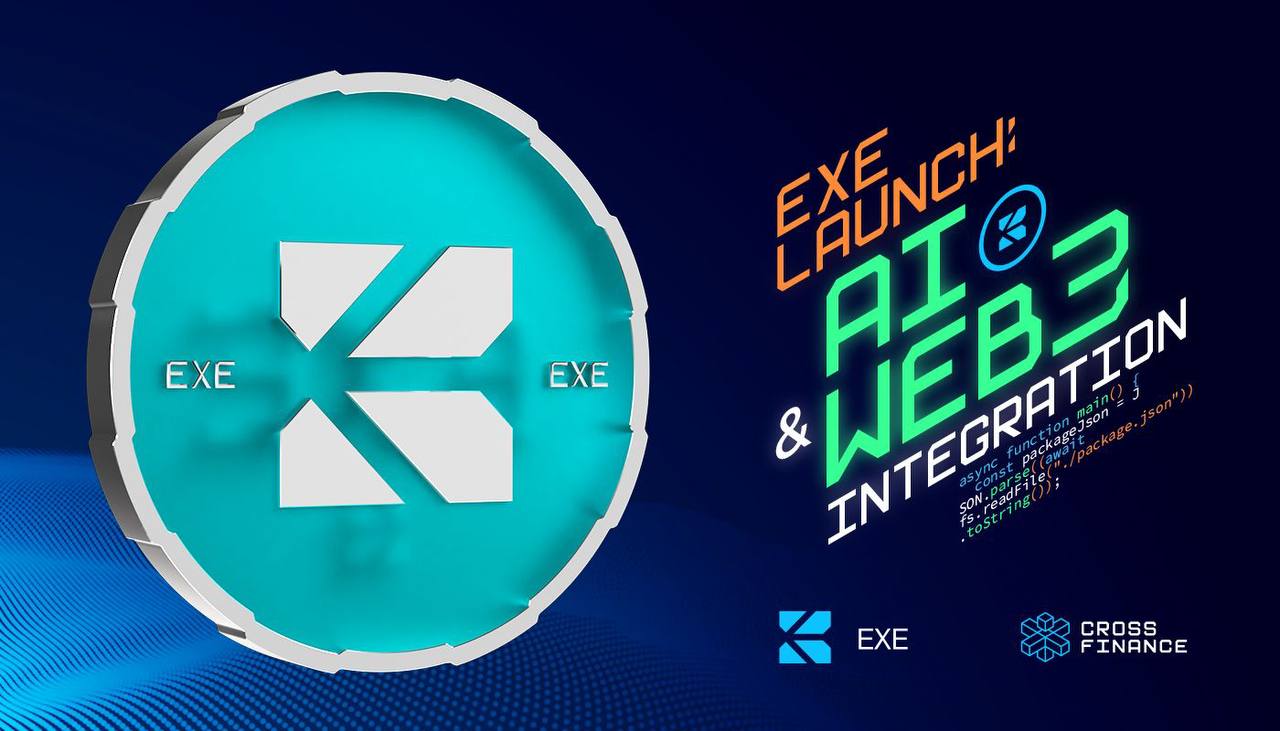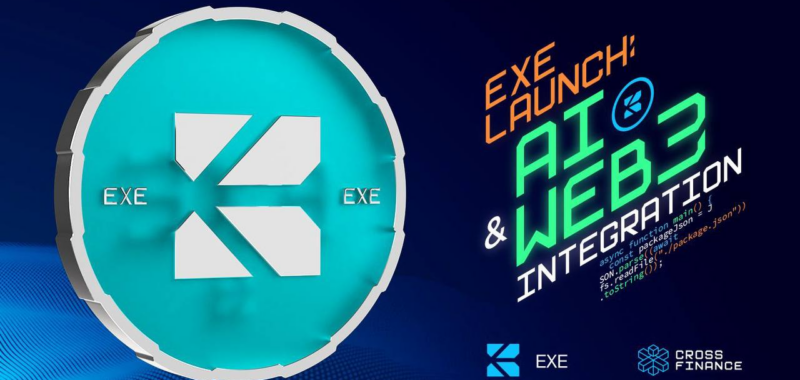
The worlds of artificial intelligence and blockchain technology are colliding in unprecedented ways. But until now, a critical piece has been missing: the ability for AI agents to seamlessly interact and transact across different blockchain networks. EXE’s launch of its Interchain AI Protocol marks a pivotal shift in this landscape, introducing a unified platform where machine-to-machine transactions can flow freely across chains.
Building on CrossFi’s established ecosystem of 100,000 users and $28M market cap, EXE isn’t just theorizing about the future of AI-blockchain integration — it’s already delivering it. As the AI agent market barrels toward a projected $47B valuation by 2030, the implications of this launch extend far beyond typical blockchain innovations.
Breaking Down Blockchain Barriers
The current landscape of AI deployment across blockchain networks resembles a fragmented maze. Developers face a daunting array of challenges. These include multiple tokens for different networks, complex bridging mechanisms that often fail, and siloed GPU resources that drive up costs. Each blockchain operates as its own isolated kingdom, forcing AI applications to either limit their scope or navigate an increasingly complex web of cross-chain solutions.
EXE’s protocol dismantles these barriers entirely. By creating a unified market for GPU resources across networks, they’ve transformed what was once a complex integration challenge into a single API call.
This means developers can tap into Ethereum’s GPU resources while running their application on Solana, or leverage Arbitrum’s computational power from a Base deployment — all without wrestling with multiple token standards or bridge protocols. This level of integration slashes both development time and costs, making advanced AI applications viable for smaller teams and projects.
The Machine Economy Takes Shape
We’re witnessing the birth of a new economic paradigm where machines don’t just assist human transactions — they conduct business autonomously. EXE’s agent-to-agent workflow represents the first practical implementation of this vision at scale.
As the first platform to unite AI agents and human participants under one economic framework, EXE enables fluid collaboration between autonomous systems and human operators. The protocol creates an environment where both machines and users can form dynamic partnerships and execute transactions without traditional barriers or intermediaries.
Imagine AI agents automatically negotiating and purchasing computational resources, trading specialized services, or collaborating on complex tasks across different blockchain networks, all without human intervention.
This isn’t just theoretical. With EXE’s protocol, an AI agent running sentiment analysis on Arbitrum can instantly hire another agent’s GPU resources on Optimism to process a surge in data. A machine learning model on Base can automatically purchase additional training capacity from unused resources on Avalanche. These transactions happen in real time, without centralized intermediaries, and at a fraction of the current cost.
The implications are profound. As the AI agent market races forward, EXE is positioning itself as the fundamental infrastructure for this machine-to-machine economy. Early metrics from CrossFi’s ecosystem show that automated agent transactions already account for 30% of network activity, suggesting we’re just seeing the beginning of this transformation.
Deflationary Dynamics
The protocol’s economic model addresses a core challenge in blockchain networks: sustainable value capture from increasing network activity. Each AI transaction on EXE automatically burns a portion of the fees, permanently removing tokens from circulation. This mechanism creates natural scarcity as network usage grows, particularly significant given the rapidly expanding AI computation market.
Early simulations demonstrate how this model could reshape token dynamics. With projected daily AI transactions reaching millions across supported chains, the burn rate outpaces new token emissions by a significant margin. The system rewards active GPU providers and AI service operators while maintaining constant deflationary pressure through actual network usage rather than artificial supply constraints.
The model also solves the traditional multi-token friction in cross-chain systems. Instead of juggling different tokens for each chain’s GPU resources, users leverage a single, increasingly scarce asset. This unified approach streamlines machine-to-machine payments while building long-term value through genuine utility and growing demand for AI computation.
Building the Machine-First Future
CrossFi’s established infrastructure provides EXE with immediate real-world validation. The protocol launches with 50,000 active mainnet wallets already integrated, plus 700,000 testnet participants stress-testing its capabilities. This built-in user base puts EXE miles ahead of typical blockchain launches, providing genuine usage data rather than theoretical projections.
The numbers tell a compelling story. GPU providers on the network report 85% resource utilization, significantly higher than traditional cloud services. AI developers save an average of 60% on computing costs compared to centralized alternatives. The network processes over 100,000 daily agent-to-agent transactions, demonstrating robust adoption of autonomous machine commerce.
Market forecasts suggest this growth marks the beginning of a larger transformation. As AI capabilities expand and more chains join the network, EXE’s unified GPU marketplace positions itself at the center of a new blockchain paradigm. Enterprise adoption shows particular promise, with several Fortune 500 companies already exploring EXE’s infrastructure for its AI deployment needs.
The next wave of blockchain innovation will focus on machine-to-machine interactions rather than human transactions. EXE’s protocol, backed by CrossFi’s proven track record and deflationary tokenomics, provides the essential infrastructure for this shift.
By solving the critical challenges of cross-chain AI deployment while maintaining true decentralization, EXE sets the stage for an autonomous digital economy where machines handle their own resource allocation, service procurement, and value exchange.
Disclaimer: This article is provided for informational purposes only. It is not offered or intended to be used as legal, tax, investment, financial, or other advice.

